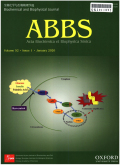- 钛学术文献服务平台 \
- 学术期刊 \
- 基础科学期刊 \
- 生物科学期刊 \
- 生物化学与生物物理学报(英文版)期刊 \
null
A simple protocol for producing high-titer lentivirus
基本信息来源于合作网站,原文需代理用户跳转至来源网站获取
摘要:
Gene function studies require loss-of-function phenotypes,which can be achieved either by the generation of gene knockout (KO) animal models or by RNA interference (RNAi) methods.Compared with KO approaches,RNAi is more time-and cost-effective.Furthermore,KO technology was mostly applied on mice so far,with only a few studies on other animal models such as rats and pigs,which also limits its application [1,2].Comparatively,RNAi can work on a much wider spectrum,from Caenorhabditis elegans to mammals [3-5].Lentiviral vectors are useful tools for RNAi because of their ability to transduce non-dividing cells and achieve stable and long-term transgene expression.Moreover,they do not induce a cellular immune response.Lentiviral vectors producing shRNAs have been shown to knockdown gene expression both in vitro and in vivo [6-9].The lentiviral particles can be delivered by local injections to take effect in a specific region or tissue,such as brain and epididymis [5,10-12].Also,lentivirus can be systemically delivered.High-titer lentivirus is essential for significant knockdown of the target gene [5,13],and therefore the production process is crucial.

推荐文章
期刊_丙丁烷TDLAS测量系统的吸收峰自动检测
带间级联激光器
调谐半导体激光吸收光谱
雾剂检漏 中红外吸收峰 洛伦兹光谱线型
不同盐度、温度及光照对漂浮浒苔生理生态的影响
浒苔
盐度
温度
光照
生理生态
期刊_联合空间信息的改进低秩稀疏矩阵分解的高光谱异常目标检测
高光谱图像
异常目标检测 低秩稀疏矩阵分解 稀疏矩阵 残差矩阵
内容分析
关键词云
关键词热度
相关文献总数
(/次)
(/年)
文献信息
| 篇名 | A simple protocol for producing high-titer lentivirus | ||
| 来源期刊 | 生物化学与生物物理学报(英文版) | 学科 | |
| 关键词 | |||
| 年,卷(期) | 2013,(12) | 所属期刊栏目 | |
| 研究方向 | 页码范围 | 1079-1082 | |
| 页数 | 4页 | 分类号 | |
| 字数 | 语种 | 英文 | |
| DOI | 10.1093/abbs/gmt112 | ||
五维指标
引文网络
引文网络
二级参考文献 (31)
共引文献 (1)
参考文献 (12)
节点文献
引证文献 (0)
同被引文献 (0)
二级引证文献 (0)
1996(1)
- 参考文献(0)
- 二级参考文献(1)
1997(1)
- 参考文献(0)
- 二级参考文献(1)
1998(1)
- 参考文献(0)
- 二级参考文献(1)
2002(5)
- 参考文献(0)
- 二级参考文献(5)
2003(1)
- 参考文献(1)
- 二级参考文献(0)
2005(1)
- 参考文献(0)
- 二级参考文献(1)
2006(4)
- 参考文献(2)
- 二级参考文献(2)
2008(1)
- 参考文献(1)
- 二级参考文献(0)
2009(2)
- 参考文献(2)
- 二级参考文献(0)
2010(2)
- 参考文献(0)
- 二级参考文献(2)
2011(5)
- 参考文献(2)
- 二级参考文献(3)
2012(2)
- 参考文献(0)
- 二级参考文献(2)
2013(5)
- 参考文献(2)
- 二级参考文献(3)
2014(2)
- 参考文献(0)
- 二级参考文献(2)
2015(6)
- 参考文献(0)
- 二级参考文献(6)
2016(2)
- 参考文献(0)
- 二级参考文献(2)
2017(1)
- 参考文献(1)
- 二级参考文献(0)
2018(1)
- 参考文献(1)
- 二级参考文献(0)
2013(5)
- 参考文献(2)
- 二级参考文献(3)
- 引证文献(0)
- 二级引证文献(0)
引文网络交叉学科
相关学者/机构
期刊影响力
生物化学与生物物理学报(英文版)
主办单位:
中国科学院上海生命科学研究院生物化学与细胞生物学研究所
出版周期:
月刊
ISSN:
1672-9145
CN:
31-1940/Q
开本:
16开
出版地:
上海市岳阳路319号31-B
邮发代号:
4-210
创刊时间:
1961
语种:
eng
出版文献量(篇)
3098
总下载数(次)
1
总被引数(次)
24352
期刊文献
相关文献
推荐文献
- 期刊分类
- 期刊(年)
- 期刊(期)
- 期刊推荐
力学
化学
地球物理学
地质学
基础科学综合
大学学报
天文学
天文学、地球科学
数学
气象学
海洋学
物理学
生物学
生物科学
自然地理学和测绘学
自然科学总论
自然科学理论与方法
资源科学
非线性科学与系统科学
生物化学与生物物理学报(英文版)2022
生物化学与生物物理学报(英文版)2021
生物化学与生物物理学报(英文版)2020
生物化学与生物物理学报(英文版)2019
生物化学与生物物理学报(英文版)2018
生物化学与生物物理学报(英文版)2017
生物化学与生物物理学报(英文版)2016
生物化学与生物物理学报(英文版)2015
生物化学与生物物理学报(英文版)2014
生物化学与生物物理学报(英文版)2013
生物化学与生物物理学报(英文版)2012
生物化学与生物物理学报(英文版)2011
生物化学与生物物理学报(英文版)2010
生物化学与生物物理学报(英文版)2009
生物化学与生物物理学报(英文版)2008
生物化学与生物物理学报(英文版)2007
生物化学与生物物理学报(英文版)2006
生物化学与生物物理学报(英文版)2005
生物化学与生物物理学报(英文版)2004
生物化学与生物物理学报(英文版)2003
生物化学与生物物理学报(英文版)2002
生物化学与生物物理学报(英文版)2001
生物化学与生物物理学报(英文版)2000
生物化学与生物物理学报(英文版)1999
生物化学与生物物理学报(英文版)2013年第9期
生物化学与生物物理学报(英文版)2013年第8期
生物化学与生物物理学报(英文版)2013年第7期
生物化学与生物物理学报(英文版)2013年第6期
生物化学与生物物理学报(英文版)2013年第5期
生物化学与生物物理学报(英文版)2013年第4期
生物化学与生物物理学报(英文版)2013年第2期
生物化学与生物物理学报(英文版)2013年第12期
生物化学与生物物理学报(英文版)2013年第11期
生物化学与生物物理学报(英文版)2013年第10期
生物化学与生物物理学报(英文版)2013年第1期

 免费查重
免费查重










